Guide: camera specifications and functions explained
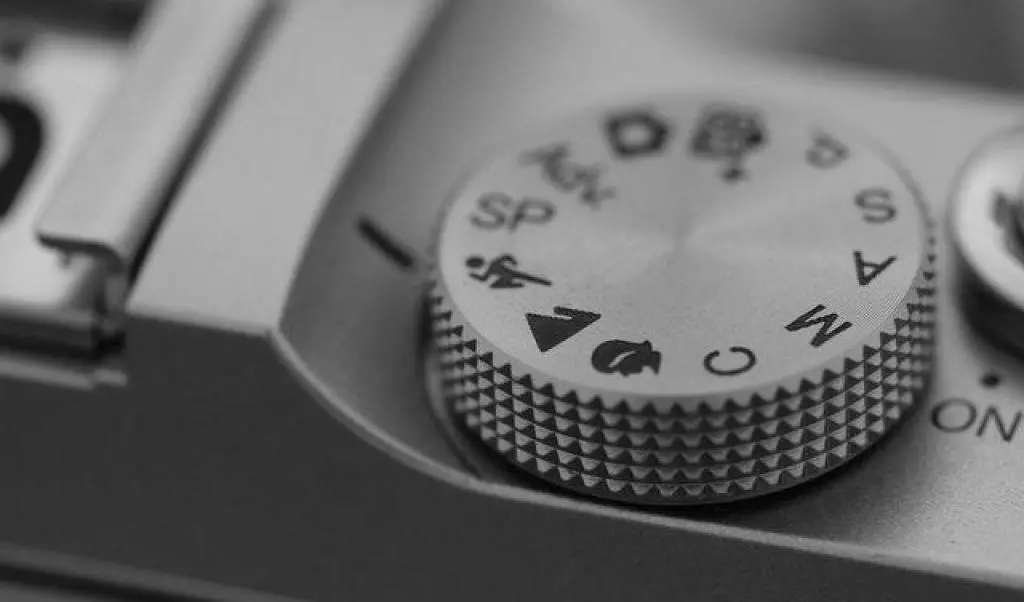
Are you looking for a new camera or video camera and ready to compare cameras by price, specifications, and model? That is great! But, what exactly do you pay attention to and based on which specifications do you compare the cameras? All product descriptions are similar and talk about sensors, image processors and megapixels. Is this essential, or is it better to look at other aspects of the camera? Camera Deals Online helps by giving tips on what to look out for when comparing cameras.
What should I look for when comparing cameras, prices and camera specifications?
To give you the answer right away: you can find the best camera for you by thinking about the kind of photography you will practice. Based on that, you choose the right camera type, sensor size, latest (and fastest) image processor and camera specifications. This probably doesn’t give you a clear answer yet, and that’s because the best camera is made up of different specs. We are going to discuss the most critical topics and camera terms that you often find in product descriptions. After reading this article, you will have enough knowledge to make a good choice.
Main factors that determine the price of a camera
There are several elements that determine the price and quality:
- Camera type (Compact camera, mirrorless camera, SLR camera)
- Sensor type and size
- Image processor quality
- Internal or electronic image stabilization
- Overall functions as rotating screen and video specs
Of course, the price of the camera depends on more than just these factors, such as a good electronic viewfinder or connections. When you compromise (or upgrade) one of the aforementioned elements, you will see that the price of your camera will change drastically. We will discuss all these terms and elements below.
The price of the camera
Whether a higher price also equals more quality differs per camera (type). With compact cameras, it typically happens that the price goes up due to elements such as a tiltable screen or the addition of a good and fast autofocus.
With mirrorless cameras, you first look at the sensor type, image processor and then the specifications. The price difference can be in small things. Think of photos per second, maximum ISO value and water resistance. But the brand also plays a part. Leica cameras, for example, are usually a lot pricier because of the name, while they can’t always do more. Design plays a role as well from time to time. People often like the ‘retro’ look, and you occasionally pay extra for that.
With cameras, it is absolutely not the case that the more expensive version is also better. When you start comparing, you sometimes even find out that a cheaper camera is better for how you want to use the camera. Occasionally, the more expensive camera has features that you don’t even need. It is therefore important that you do your research and figure out what the camera can and cannot do. If the camera becomes more expensive due to functions you do not need, then you already know that the camera is not the right one for you (and the cheaper one probably is).
Camera introduction year
The year of introduction is less essential for photo and video cameras than for a cellphone. Of course, new technologies are released every year, but this happens faster in one sector than in another. A smartphone that is two years newer than the others often also has new technology, but with a mirrorless camera, a difference of two years doesn’t always say much. You buy a camera for the long term, even if you buy a cheaper model. Major innovations within a camera occur once every 3 or 4 years. Think of a new image processor or the possibility to film in a higher resolution. So don’t be tempted by the introduction year. A camera from two years ago can still be (almost) as good as a camera that is currently being released, especially if you buy a camera from the more expensive segment. It’s more about the quality of processor and sensor.
Megapixels
For many people, megapixels are the deciding factor. “This camera is cheaper and has more megapixels? Then it must be the best”. Unfortunately, it doesn’t work that way. After all, a 16-megapixel photo with lots of color, light, contrast, and photo information is more useful than a 30-megapixel photo that is compressed and barely contains light information. A large number of megapixels ensures that you can stretch the photo far or zoom in, while it still being sharp. This is because there are several pixels per square centimeter that contain a color and information. But that only works if that pixel also contains a lot of complete information about the photo.
When do I pay attention to many megapixels? (15MP and above):
- If you want to edit photos professionally
- If you would like to be able to print photos in a large format (larger than a scrapbook)
When does the number of megapixels matter less? (10 to 15 MP)
- If you mainly would like to share photos online (social media)
- If you would like to use standard filters from the camera or, for example, Instagram/TikTok etc.
- If you want to print photos for a scrapbook
- If you would rather not apply a lot of editing with, for example, Lightroom or Photoshop.
It is therefore important that the megapixels go hand in hand with good image processing and information. This is where the image processor and sensor come into play. It is therefore possible that an expensive 10-megapixel camera delivers better photos than a cheaper 30-megapixel camera. A compact camera of 12 to 15 megapixels is perfect for taking everyday photos and for printing later for a photo book. If you go for a mirrorless camera, then most cameras have 18 megapixels or more.
Sensor
The camera sensor captures the light that enters through the lens. The size of the sensor largely determines how expensive your camera is, and the size is an essential factor when choosing your new camera. There are different sizes of sensors and the larger the sensors, the more light they can capture and a larger angle of view you get. A larger and light-sensitive sensor is also pricier. Because the sensor captures more light, you have more options when it comes to shutter speeds (important for sports) and taking photos in lowlight situations. You may notice that cameras with a small sensor are referred to as “the 35mm equivalent”, meaning the full-frame sensors and used as a starting point for comparison.
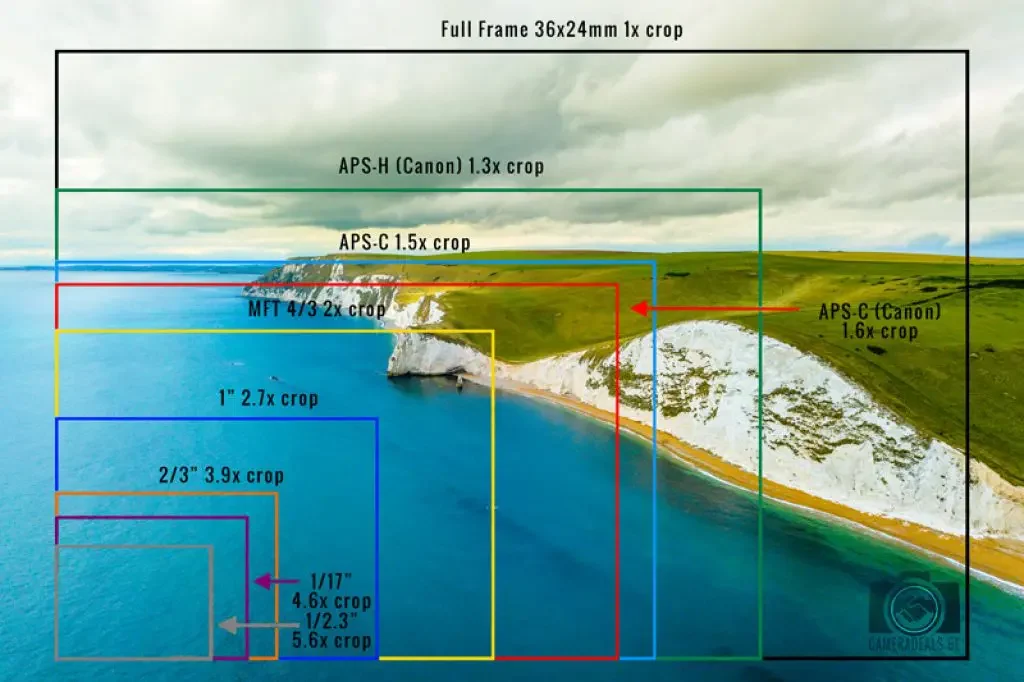
Photo credit: Yoreh Schipper / Camera Deals Online
A number of common sensors in order from largest to smallest:
- Medium format
- 35mm Full Frame
- APS-H (Canon)
- APS-C (Nikon DX, Pentax, Sony)
- Micro FourThirds (Olympus, Panasonic GH)
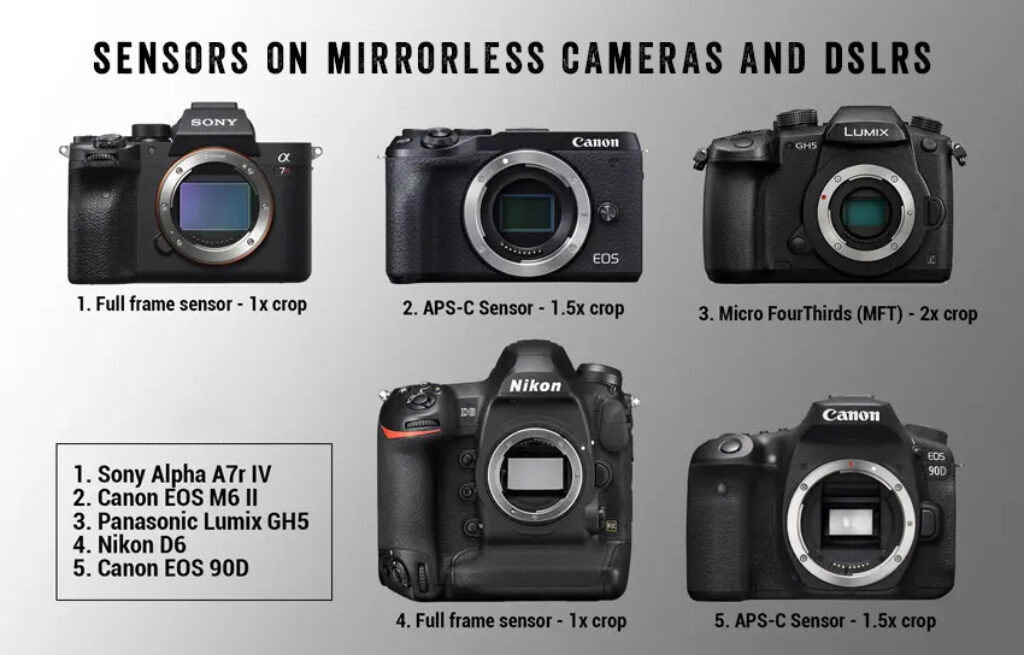
Photo credit: Yoreh Schipper / Camera Deals OnlineIt is therefore possible that a mirrorless camera with an APS-C sensor has more megapixels than a full-frame camera, but that does not mean that you have a better photo. The sensor almost always trumps the number of megapixels, so it’s essential to look at the sensor first before checking any other specifications.
Image processor
The image processor is the heart of your digital camera and also essential when choosing your new camera. Just like with computers and telephones, a fast image processor gives you a faster camera. Think not only of fast boot up or scrolling through the menus, but also a shorter processing time of the photo and video. The faster the photos are processed, the more photos you can take in a short time (burst). This fact is especially important for sports or wildlife photographers. Cameras that can take between 11 and 30 photos per second with the mechanical shutter are a lot pricier than cameras that can shoot at 5 photos per second.
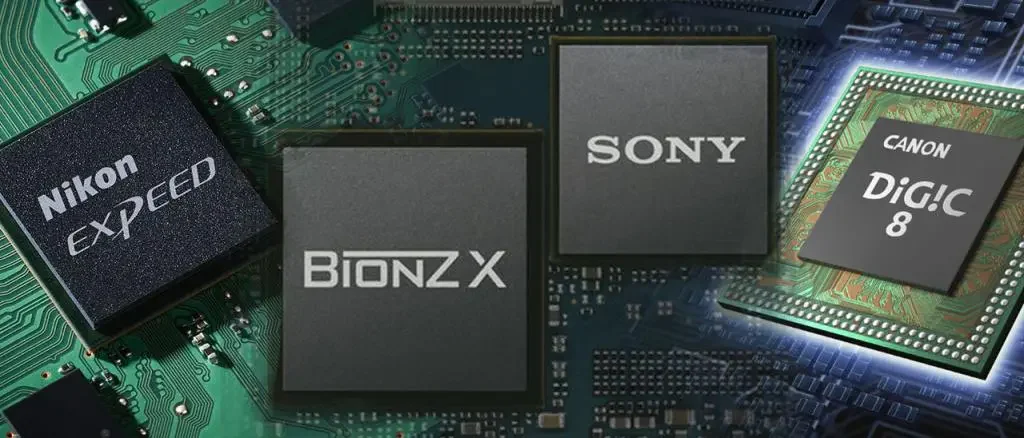
Well-known image processors for cameras:
Most of these processors are followed by a number to indicate how new they are.
- Canon – DIGIC (based on Texas Instruments OMAP)
- Fujifilm – EXR III or X Processor Pro
- Leica-MAESTRO
- Nikon–Exped
- Olympus–TruePic
- Panasonic–Venus Engine
- Pentax–PRIME (Pentax Real Image Engine)
- Sigma–True
- Sony–Bionz
Figuring out which image processor is used for the camera is therefore quite important! Most brands release a new model every two years. Fortunately, a camera from this year usually also has the latest processor. Of course, there can be a difference between a cheap and an expensive camera of the same brand.
Photos per second & Shutter speed
You’ve probably seen ‘fps’ in a product description. FPS stands for ‘frames per second’.
While some cameras take 6 photos per second, others take up to 40 (or more). The first thing you can ask yourself: do I need this? The answer is ‘yes’ when you want to capture fast-moving objects with pin-sharp clarity. Think of athletes, birds, insects or when you do close-up or macrophotography. When you take group photos or capture a daily moment (from your vacation), you don’t need many photos per second. With 15 fps, for example, the advantage is that you always take a good photo. The disadvantage, however, is that you have to select 15 photos, and they also take up space on your memory card. Photo per second is different from shutter speed. Shutter speed only indicates how long the shutter lets light through. It is therefore possible to take 15 photos per second with a shutter speed of 1/1000 (one thousandth of a second).
What to attention to if you want many photos per second
If you would like to have a high fps, then make sure that the camera has a fast electronic shutter. High speeds are almost only achieved with the electronic shutter. The electronic shutter also ensures that you can reach an extremely fast shutter speed of 1/32000 (like on the Sony A9 series) and take pictures silently. If you want the camera to reach high speeds with the mechanical shutter, you will see the price of the camera skyrocket.
Mechanical vs Electronic (silent) shutter
With a mechanical shutter, you have the curtain that opens and closes rapidly to let light through to the sensor. The fastest shutter speed you can achieve with a mechanical sensor is 1/8000. The mechanical shutter has a maximum speed, and therefore there is a limit to the number of photos per second that the camera can take.
With an electronic shutter, the curtains are open, and the camera reads the information from the sensor line by line. Because this can be done at extremely high speed (with a good image processor), you can take up to 30/40 photos per second or achieve a shutter speed of 1/32000. In some cameras, this is called ‘silent mode’. Not many cameras have this because it is an expensive technique.
When are many frames per second, high shutter speed or an electronic shutter good for me?
- Sports photography (high fps and high shutter speed)
- Bird photography (many fps and high shutter speed and possibly electronic shutter)
- Nature photography where you cannot / do not want to disturb the animals (electronic shutter)
- Behind the scenes photography on, for example, a film set (electronic shutter)
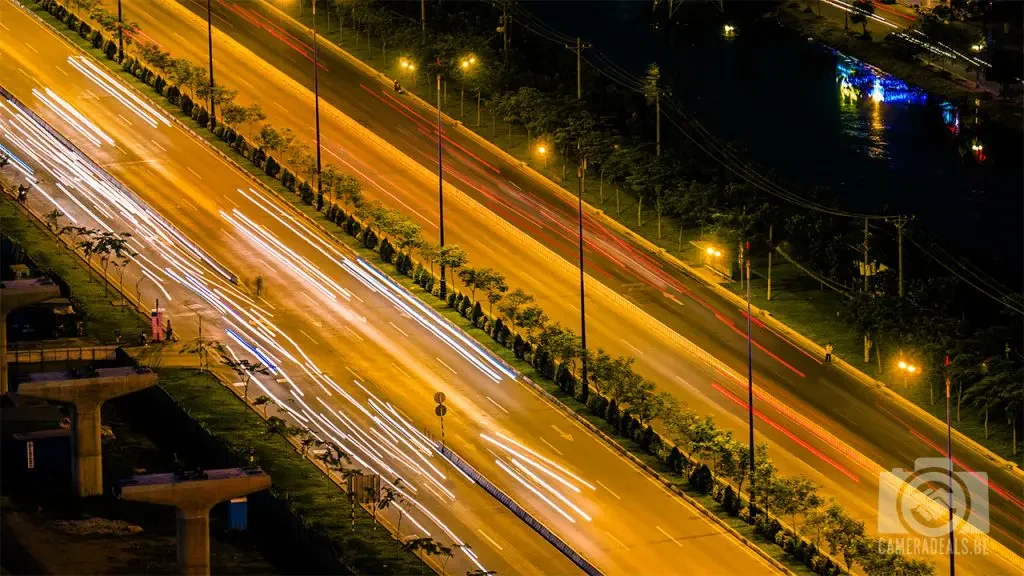
A slow shutter speed (like 1/10) allows more light to hit the sensor, and you can create this cool stretched light effect. Photo credit: Yoreh Schipper / Camera Deals Online
The best cameras can also achieve extremely fast shutter speeds with their mechanical shutter.
Photo camera Connectivity
A camera’s connectivity won’t set the price very much, and there are several types:
- Wi-Fi
- Bluetooth
- GPS
- NFC (Near Field Communication)
With a cheap compact camera model, you may not find Wi-Fi and you have to transfer the photos using a cable or memory card in the computer. The combination of Wi-Fi & Bluetooth is especially important if you would like to transfer or use your smartphone. You can use this to take pictures from a distance or adjust settings. GPS is useful if you are on the road or traveling a lot. With GPS, the location, time, date and sometimes even the altimeter are saved.
NFC is a nice trick, but in my experience, something you use very little. The Near Field Communication lets you hold the camera and smartphone together and import photos to your phone. This can, of course, be essential if photos of an event need to be shared directly on social media.
Image stabilization for photography
Image stabilization comes in several forms:
- Electronic image stabilization in the camera body
- 3- or 5-axis mechanical image stabilization in the camera body
- Optical stabilization in the camera lens
The internal mechanical image stabilization is the most complex and will make the camera more expensive. With this technique, the sensor moves and tries to absorb and stabilize the movements and shocks. It’s a great technique and rarely superfluous, but it’s going to cost a little extra. With electronic stabilization, the image is stabilized in the camera. This is at the expense of the frame. The stabilization zooms in on the image to stabilize it.
A camera lens can also have stabilization, and this can be combined with the in-body stabilization. If a camera does not have stabilization, it is necessary that the lens does, but not when you always film or photograph using a tripod.
The LCD screen
It takes quite a bit of work to make a touch screen that can tilt 180 degrees. So, you can imagine that the price will also increase as a result. With a tiltable screen, there is the option to take photos from all kinds of different angles and positions. A tiltable screen can be helpful for professional users as well. If you want to use the camera to record vlogs, then a fully tiltable screen is of course indispensable.
Video specifications
Recording video with a mirrorless camera is more than normal these days. The Panasonic S1H full-frame mirrorless camera is so good that it was the first mirrorless camera, having been approved by Netflix as an official A-camera for TV series and films. When you start making videos, there are several things that you can and should pay attention to during the purchase:
- Processing speed
- Bit rate
- Frame rate
- Film Resolution
- Color Profiles
- Connections for mic, screen, and external light
- Accessory shoe
- Tiltable screen
- Image stabilization
Processing speed
The processing speed that the camera can handle is essential for the quality of the film. It has to do with the amount of information that is sent to the memory card per frame. The faster, the more information is available in post-processing. A lot of image information is important when you are going to perform the color grading. This includes colors, shadows/contrasts and highlights.
It is therefore possible that a Full-HD image with a high processing speed looks better in quality than a 4K image with a lower processing speed. Cheaper models will have an output of 50mbps to 100mbps, and more expensive models will go from 200-400mpbs and above. If your camera can handle a speed of 400mpbs, you should also purchase suitable very fast memory cards. Good to know is that these are costly and fill up quickly. Filming on this high quality is mainly intended for professionals who work with a script.
What video processing speed is good?
If you want to record and edit beautiful 4K images for own use, then 50mbps is all you need. Professionals will probably go for a minimum of 150mpbs, but that again depends on the video they’re shooting. Occasionally, it does not make much sense for online use to work at such speeds. In addition, it costs a lot of space, memory, computer speed and ultimately, it costs a lot of money.
Video bit rate
The bit rate has to do with the color information and color depth. Most cameras have an 8-bit output of image information, and that is more than enough to make a nice video. Slightly more expensive models have the option of recording 10-bit information using an external video recorder. Today, high-end models allow internal recording of 10-bit film. Of course, this goes hand in hand with a high processing speed of at least 400mbps and therefore a lot of memory card space. Several mirrorless cameras can even broadcast 12-bit information, but you only need that if you are a seasoned professional and are ready to spend a lot of money on storage.
Video Frame rate
The frame rate (fps) is about how many images are recorded per second. This can range from 23 to 30 frames per second for real-time recording, and from 50 frames per second to 240 frames per second for slow motion. The more frames per second the camera can film, the more you can slow down the image.
Slow motion
They often do it smartly; the camera is sold with a super-slomo function of 1200 frames per second. What they don’t say is that the quality is absolutely terrible, and you need a huge amount of light to illuminate your subject. Most compact cameras, mirrorless cameras and DSLRs can film in Full HD at 50 or 60 frames per second. If you look in a more expensive segment, you will come across the cameras where you can shoot in 4K with 23, 24, 25, 30 fps and in Full-HD up to 120 fps. The most expensive segment will give you 4K (or 6K) image with 60 (up to 120) frames per second and Full-HD up to 240 frames per second in pretty high quality.
Slow motion is fun, but for most people it’s a toy they use once and never again. If you are a consumer who just wants to make fun videos, don’t fall for high resolution and frame rates. Chances are, you’re spending your money on something you don’t need.
Video resolution
You might think that resolution is one of the most important video aspects, but after reading the information above, you will have found out that 4K film only becomes beautiful with good processing speeds, sensors, and image processing. The high resolution for consumers is mainly a smart marketing trick. As a result, you buy a more expensive camera, more memory cards and in the end you do almost nothing with the videos.
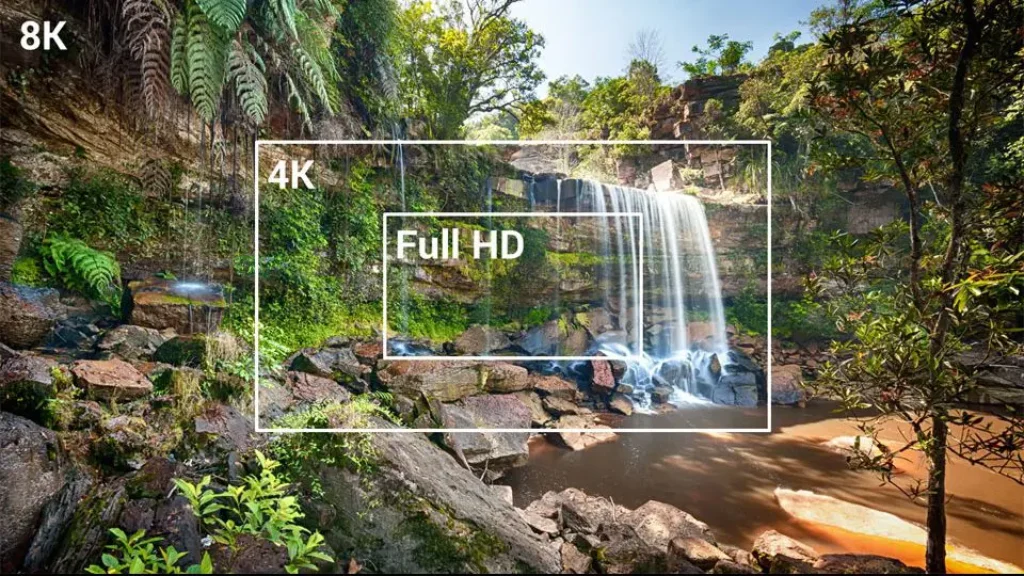
How resolutions differ. Photo credit: AVSforums
But if you want to get started with film seriously or professionally, the 4K function becomes very interesting. A 4K image contains twice as many pixels as Full-HD image, which means that you can zoom in up to 2x without losing too much quality. It is important that the 4K is filmed with a high processing speed. If you don’t do that, and you zoom in on the image, ugly pixels will appear.
Color profiles and V-Log
This is one for the serious or professional filmmaker. Color profiles such as V-log or S-log2/3 record a flat image with as little contrast and color as possible. If you film at high quality, you have the option to adjust the colors completely as you want. Dealing with V/S log in post-production is a lot of work and takes a lot of time. Are you a fan of ‘cinematic’ looks and are you willing to spend time on the color grade? Then color profiles like this are perfect for you. Do you want the video to look good immediately, then stick to the ‘default’ color profile.
Connections for microphone, external screen and light
Are you going to use the screen on the camera, or do you want to connect an external monitor or recorder? With the latter, it is useful to check whether the camera has an HDMI output and what kind of connection your intended external screen or recorder has. To make your recordings more professional, it is useful to connect an external microphone or lavalier microphone. Check whether the camera has a microphone input and headphone output.
You can use the ‘hotshoe’ or accessory shoe on top of the camera to place the microphone in the slides or a large lamp. With good lighting, your film is guaranteed to be a lot better!
Tiltable screen
You would almost forget, but when you film with the camera, it is so nice that you can fold out and tilt the screen. This way, you make it possible for yourself to film from different angles. Also check how the screen tilts. Many Sony models have a screen that can only tilt 45 degrees, while the Panasonic models have a 180-degree tiltable screen. You should also take this into account for vlogging.
Image stabilization for film
Image stabilization comes in several forms:
- Electronic image stabilization in the camera body
- 3- or 5-axis mechanical image stabilization in the camera body
- Optical stabilization in the camera lens
The internal mechanical image stabilization is the most complex and will make the camera more expensive. With this technique, the sensor moves and tries to absorb and stabilize the movements and shocks. It’s a great technique and rarely superfluous, but it’s going to cost a little extra. With electronic stabilization, the image is stabilized in the camera. This is at the expense of the frame. The stabilization zooms in on the image to stabilize it.
A camera lens can also have stabilization, and this can be combined with the in-body stabilization. If a camera does not have stabilization, it is necessary that the lens does, but not when you always film or photograph using a tripod.
Accessory shoe or hotshoe
The accessory shoe can be found on top of the camera and is for mounting an external flash, microphone, or transmitter. While cheaper camera models sometimes do not have an accessory shoe to reduce costs, you will find them on most cameras. There are two types of hot shoes; active and not-active. The not-active ones only serve as a mounting point, where active hot-shoes can also transmit information or even charge a device. For example, it is possible to send lens information such as aperture to the flash so that settings can be adjusted automatically based on this.
Vlogging
If you are a (serious) vlogger, there are several things that your vlogging camera should definitely have or that you can pay attention to:
- Fast autofocus (possibly with ‘eye-focus’)
- A wide lens that supports autofocus
- Image stabilization in the body or at least in the lens
- Microphone connection for shotgun microphone or lavalier microphone – important!
- Hotshoe / accessory shoe for mounting external lamp
- A model that is not too heavy
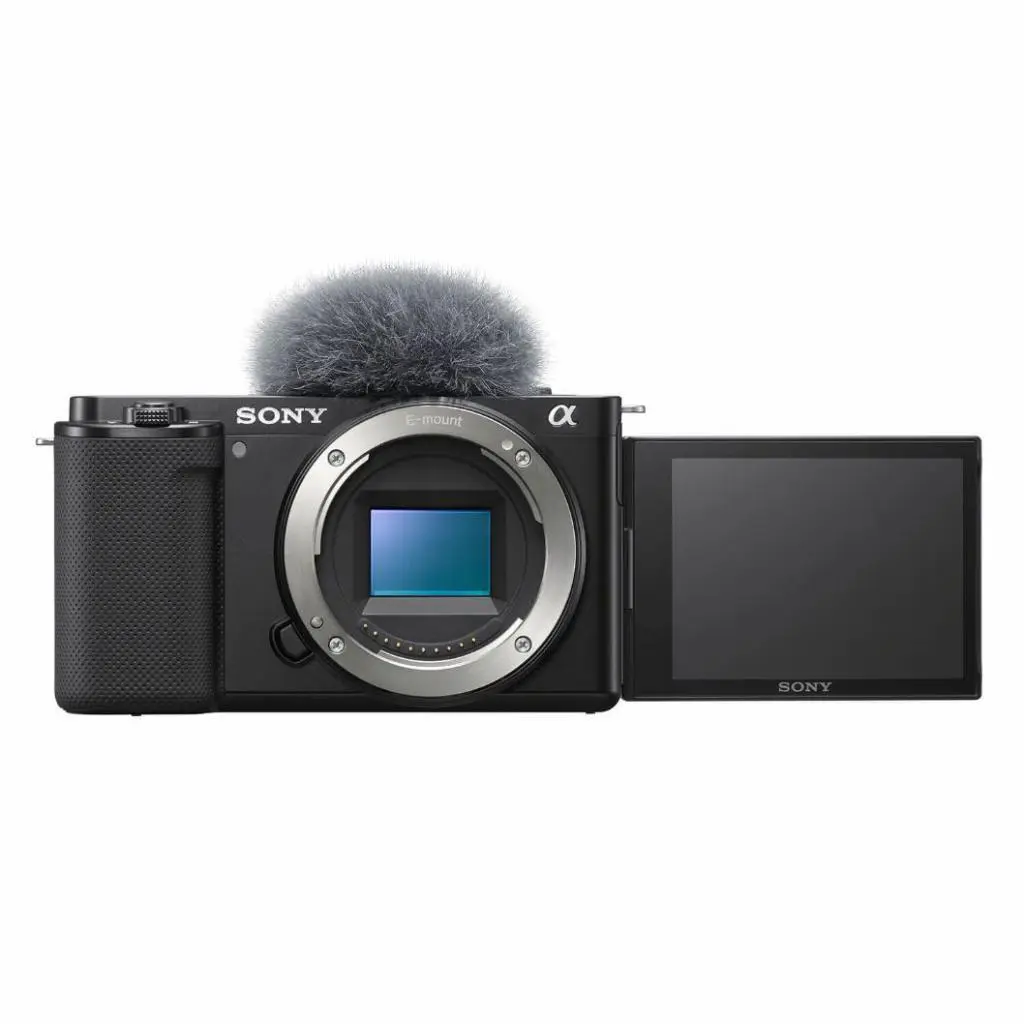
Sony ZV-E10 vlogging mirrorless camera
Lens mount and which lenses go with it
The lens mount is only important for mirrorless and SLR cameras because you can change the lens with these camera types. Every mirrorless and DSLR camera has a certain lens mount, and this can differ per brand (and lens). The type of mount does not have much influence on the price of the camera, but it is important to know which lenses belong to the camera. To get the best out of your camera, it is wise to use lenses that have the same mount as your camera. It is of course possible to use a Panasonic Micro FourThirds mount with a Canon 16-35mm USM II lens (EF mount), but then you need a ‘converter’. A good converter easily costs €600 and when you buy a cheaper one you might find that the speed of the autofocus will be affected negatively. When you buy a new camera, take a look at what kind of lenses it fits, and what the prices are. Good news! Almost every lens brand has lenses in both low and high price categories.
Other things to look out for (or not) in a camera
There are numerous smaller things that you can pay attention to when purchasing your new camera. We discuss these below.
JPEG / RAW / HEIFF
When you take a photo, it is processed into an image that can be displayed on your screen. The file format is in most cases a JPG/JPEG. A JPG file is of high quality, but compressed, so they won’t take up too much space on your memory card. This is not a problem if you want to leave the photos as they are. But when you want to heavily edit the photos, then it becomes a problem. Due to the compression, details in color, light, and sharpness are lost, which you need if you want to edit. By taking the photo in RAW, you retain all these details, and you have more color space to edit the photo. Shooting RAW photos results in large files (up to 20mb per photo) and when you want to open them on your computer you need a special program. Think Photoshop or Lightroom. When you want to edit photos, always make sure you can shoot in RAW. By the way, you can also edit photos in high JPG quality.
HEIFF photos
Photos saved in HEIFF (H.265) have special compression. The photos are additionally compressed to save space. Strangely enough, no quality is lost. The photos are taken at 10-bit color depth and have even more color information than JPEG photos. JPEG photos use an 8-bit color depth. If you use an Apple computer, you can always view HEIFF photos, but Windows computers need a special program to display HEIFF photos.
Autofocus points
People often rave about cameras with many autofocus points, but as long as you don’t photograph sports or birds, you don’t need that many AF-points. An object moving quickly within the frame requires many autofocus points to get a sharp shot, but when you’re capturing children playing, a group or landscapes, you don’t need all of these points. So, don’t be persuaded to buy a camera because of the many autofocus points.
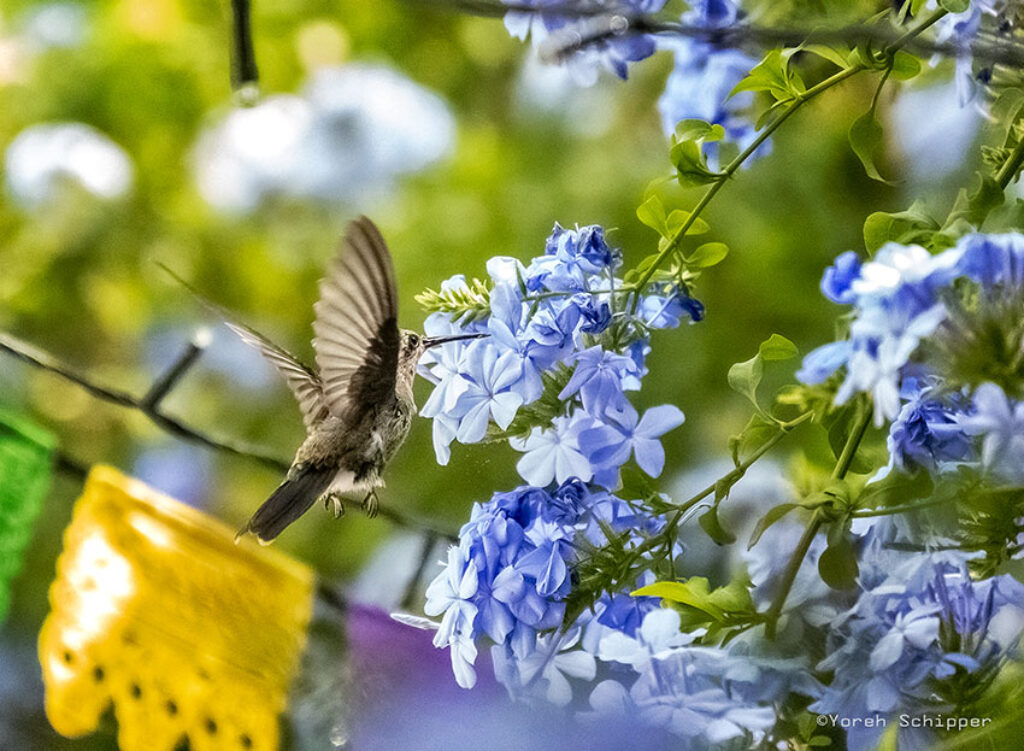
Many autofocus points are useful when you do bird photography, for example. Shutter: 1/4000
Photo credit: Yoreh Schipper / Camera Deals Online
Hummingbird in Mexico by Yoreh Schipper. Many autofocus points are useful when you do bird photography, for example.
ISO values
The ISO indicates the light sensitivity of the sensor. The higher the number, the more sensitive the sensor is to light. You raise the ISO if you are in a poorly lit room, for example. The ISO is an electronic process and at high values noise can (and will) arise. When you set high ISO values (3200/6400+) with a small sensor (Micro FourThirds and APS-C), you are guaranteed to see noise. Now it depends on what kind of image processor is in the camera. The better the processor, the better the ISO and noise are handled and suppressed. The quality of the processor goes hand in hand with the price. Full-frame sensors capture more light because they are larger. When you raise the ISO value on a full-frame sensor, it will take longer before you see noise, for example only from ISO 12800.
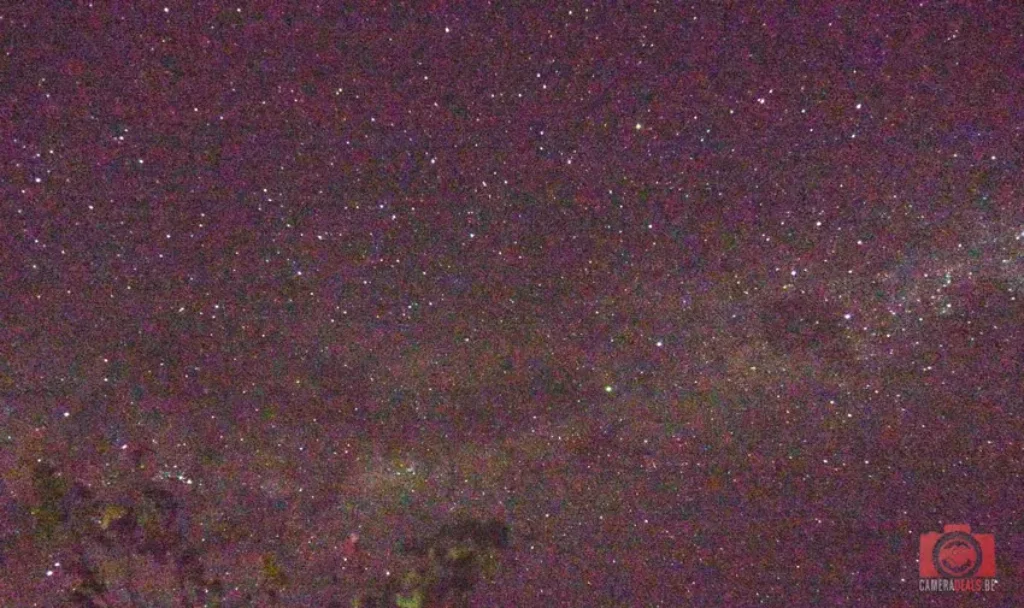
Starry sky with high ISO and no noise-reduction. Photo credit: Yoreh Schipper / Camera Deals Online
Numerous cameras advertise that they can go up to ISO 51,200 or higher, but in practice your photo will be full of noise if you set this value. Basically, you don’t want to go higher than ISO3200 on a mid-range camera. Just because a camera can handle extremely high ISO values doesn’t mean you should.
There are some cameras that are specially made for working with high ISO values. Think of the Sony A7 series and Panasonic GH and S series.
What to pay attention to per photography style:
Sport and bird/animal photography
- Buffer: pay attention to how many photos fit in the buffer when you shoot in burst or continuous mode
- Photos per second: Check how many photos per second the camera can take with both the mechanical and electronic shutter
- Autofocus points: When capturing fast-moving objects, you want as many autofocus points as possible. Preferably both contrast and phase detection.
- Maximum shutter speed: Many cheaper cameras achieve a maximum shutter speed of 1/4000. If you spend more money, it will range from 1/8000 to 1/32000
- Electronic shutter: If you don’t want to disturb animals, see if the camera has an electronic silent shutter/mode
- Image stabilization: When you move quickly and zoom in, it’s nice if image stabilization is present. Check whether it is incorporated in the body or in the lens.
Read more about how to get started with bird photography.
Nature/landscape photography
- Electronic shutter: If you want to avoid disturbing animals, see if the camera has an electronic silent shutter/mode
- Water-Resistant: See if the camera is certified for dust and splash resistance
- Sensor: A full-frame sensor provides a wider image than an MFT sensor. Based on your sensor, you also need to adjust your lenses. When you put a 24mm lens on a full-frame camera, you
- actually have an image of 24mm. But when you put that same lens on an MFT sensor, you have a crop factor of 2. You are therefore zoomed in 2x. You will then need an even wider lens (12mm) to get the same width.
- GPS: The GPS records the location, time, and altitude while taking the photo. This can be important when shooting in the middle of nature
Macrophotography
- Sensor: A full-frame sensor provides a wider image than an MFT sensor. Based on your sensor, you also need to adjust your lenses. When you put a 24mm lens on a full-frame camera, you actually have an image of 24mm. But when you put that same lens on an MFT sensor, you have a crop factor of 2. You are therefore zoomed in 2x. When you place a macro lens on an MFT sensor, you are therefore even more zoomed in on the object, and that can work out well.
- The right lens: if you want to practice macrophotography correctly, you need a macro lens.
- Image stabilization: When you zoom in fully, you see every little vibration and movement. Image stabilization is therefore indispensable. You can think about combining in-body stabilization
- with the stabilization in the lens.
Vacation/holiday Photography
- Creative filters: Built-in creative filters can add a fun effect to your photos.
- Connectivity: Does the camera have at least Wi-Fi to send the photos to your phone?
- Weight: Keep it fun and choose a camera that doesn’t weigh too much. It would be a shame if you left the camera at home because it is too heavy.
- Make sure that the camera has at least 15 megapixels if you want to print photos for a photo album or on the wall
Portrait photography
- Sensor: A camera with a full-frame sensor gives a wider image than an MFT sensor. Based on your sensor, you also need to adjust your lenses. When you put an 85mm lens on a full-frame camera, you actually have an image of 85mm. But when you put that same lens on an MFT sensor, you have a crop factor of 2. You are therefore zoomed in 2x. You will then need an even wider lens to get the same width.
Cinematography (film)
- Resolution: buy a camera for the next 5 years and invest in it. Even though most online videos are in HD, you can see the difference when you shoot in 4K.
- Bitrate: Color depth is important when editing. The higher the number, the more information you have at your disposal. But this also requires better and faster memory cards
- Processing speed: Shooting at 200mbps gives you a lot of information to work with, and that will improve your image quality. It is worth noting that you will need fast and expensive memory cards.
- Tiltable screen: If you are not going to use an external screen or recorder, it is essential that your screen is tiltable.
Conclusion on camera specs
When you compare cameras on specifications and prices, it is important to remember that the more expensive is not always better (for you). Think about what kind of photography you mainly want to practice, and choose the type of camera based on that. Determine which sensor size you want and choose which specifications the camera should have for your type of photography. If you have gone through the points mentioned above, we are confident that you will find the perfect camera for you. Do you have questions or additions? Want to go back to the basics and do you need to find out which camera is best for you? We have an article about that too: Which camera should I buy: the ultimate guide. Let us know in the comment section below!
Camera terms and words dictionary
If there are words in this article that you do not understand, you can take a look at our Camera Terms and words dictionary. This list is continuously updated with new camera words and explanations.
What is Camera Deals Online?

We at Camera Deals Online find the best video and photo camera, lens and drone and online prices for you. With us, you can find camera prices, top-lists and we write reviews and blogs with tips and camera information. In addition, we give you the latest news about cameras, smartphones, camera equipment, film, and the photography field. This way, we help you find and buy the best camera, lens, drone, gimbal and accessories. Our website is 100% independent.
Camera Deals Online exists thanks to you! When you buy a product through one of our links, we receive a small percentage of the total amount. This has no effect on the price of the product. Thank you!
News and recent posts









